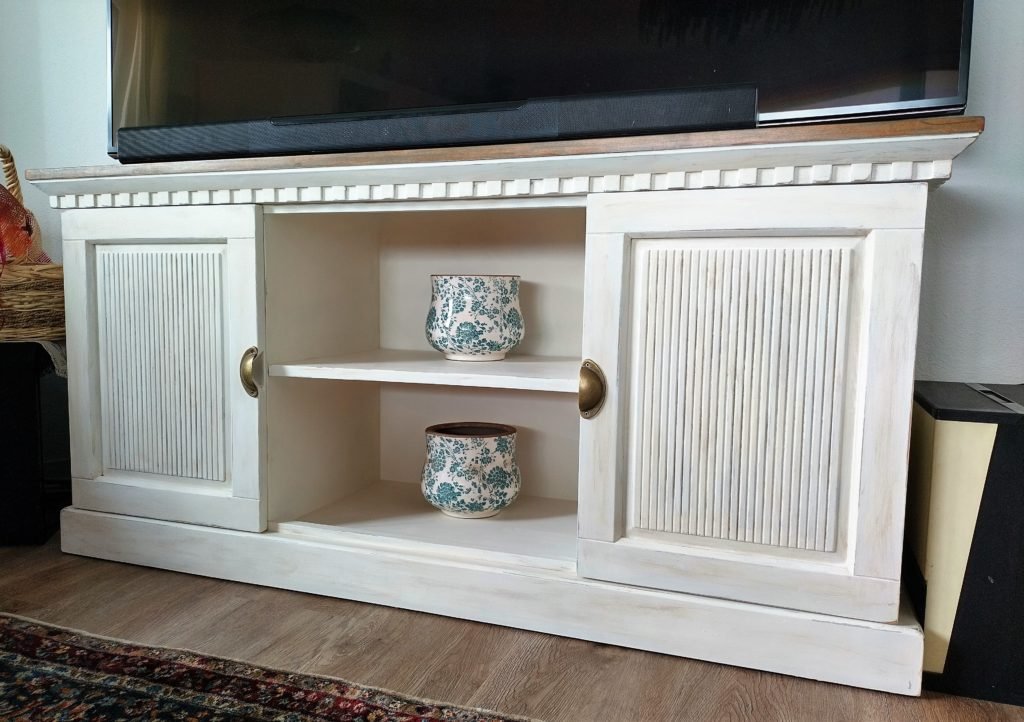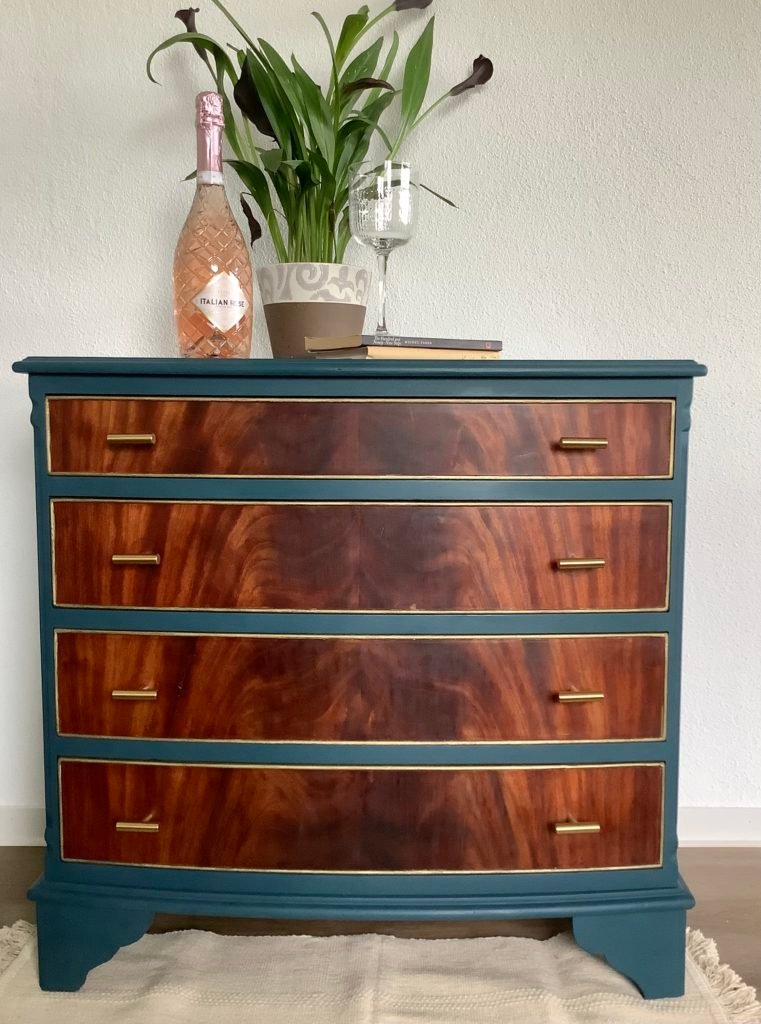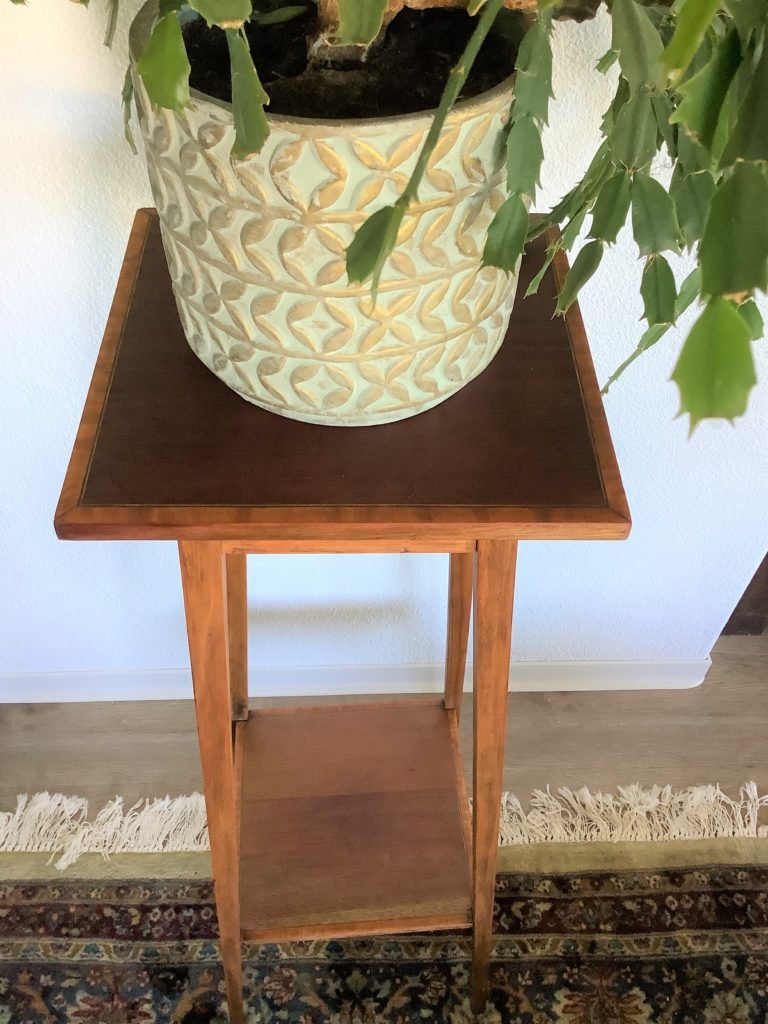This solid wood TV unit was in really good condition but the yellow-toned wood did not fit well into the living room. Taking off the varnish and colour from the top of the unit revealed solid pine boards glued together. Pine is a well-used and loved furniture wood because it is readily available and not as expensive as other types. It has many advantages and only a couple of disadvantages such as a fairly plain wood texture and a tendency to resist even staining. My goal was to stain the top of this piece. Unfortunately, my first attempt was less than stellar with the resultant orange colour hardly an improvement on the previous yellowing stain. And the colour chosen for the body of the piece was more grey than sandy.
When a gap appeared in my work schedule, I stripped it back again. Using a couple of techniques I’d never tried before I soaked the stripped-down top with a tea stain. I was interested to see if it added tannins to the wood as people had suggested it would. The end result was not overly visible but I hoped the next treatment would work better because of it. The next technique was a stain made from vinegar and steel wool. I experimented with boiling the vinegar (apple cider vinegar) and letting the steel wool soak in it until it had cooled. The colour in the mason jar was light, but over the days it continued to darken. However, I was keen to start with a lighter approach and applied this stain several times (plenty of drying time in between) until I had reached the desired weathered look.
The body of the unit was painted antique white. Using a dry brush and a cocoa colour I dried brushed and waxed the fronts and side. New shell handles in bronze now cover the in-built wooden handles. The end result is rustic with a kind of roughed-up look. It has been fun experimenting with this piece and for the moment, am happy to keep it as is. After all, a new look is just a paintbrush away.







